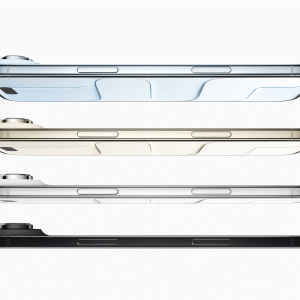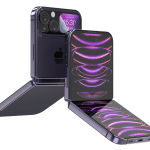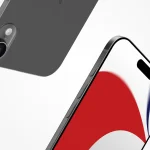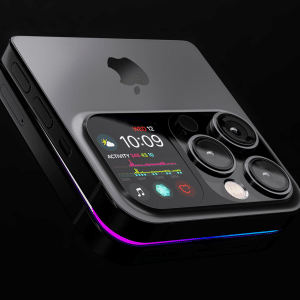The names “iPhone Air” and “iPhone Slim” suggest a focus on sleek, lightweight design. Drawing inspiration from Apple’s MacBook Air, the iPhone Air might be positioned as a more portable, ultra-thin variant. Meanwhile, the iPhone Slim could push the boundaries of minimalism, possibly becoming Apple’s thinnest and most elegant phone yet.
These models are likely to appeal to users who prioritize design and portability. With the market for smartphones becoming increasingly saturated, Apple could be targeting niche segments that value style and convenience, potentially attracting users from competitors who offer similar design-forward devices.
Both the iPhone Air and iPhone Slim are rumored to feature ultra-thin profiles, setting a new standard in smartphone design. Apple’s pursuit of a thinner form factor could involve advanced materials and engineering solutions to ensure durability without compromising on aesthetics or performance.
A key feature of these models would be their lightweight design, making them ideal for users who prefer a device that’s easy to carry and hold for extended periods. This could involve the use of lighter materials or innovative internal configurations that reduce weight without sacrificing battery life or functionality.
While the idea of thinner, lighter phones is appealing, there are potential trade-offs to consider. A slimmer profile could impact battery capacity, and the use of ultra-thin materials might raise concerns about durability. Apple will need to balance these factors carefully to ensure that the iPhone Air and iPhone Slim deliver on performance as well as design.
Advanced Technology and Features
Despite their slim profiles, the iPhone Air and iPhone Slim are expected to incorporate advanced technology. This could include the latest A-series chips, 5G connectivity, and possibly even new camera systems designed to fit within the thinner bodies.
Rumors suggest that these models might feature improved display technology, such as OLED panels that offer better color accuracy and contrast while being thinner than traditional displays. This would enhance the visual experience without adding bulk to the device.
One of the biggest challenges with ultra-thin devices is maintaining battery life. Apple might tackle this issue with more efficient components and software optimizations that extend battery life without requiring a larger battery.
The iPhone Air and iPhone Slim could complement Apple’s existing iPhone lineup by offering alternatives to the Pro and standard models. These devices might appeal to users who prioritize design over the high-end features found in the Pro models, or those who want a more affordable, stylish option without sacrificing too much in terms of performance.
With these models, Apple could be positioning itself to compete more directly with Android devices that emphasize slim, stylish designs. The iPhone Air and iPhone Slim could help Apple capture a segment of the market that values aesthetics and portability, challenging competitors like Samsung and Xiaomi.

The Future of iPhone Design
If the iPhone Air and iPhone Slim rumors are true, they could represent a significant shift in smartphone design, pushing the boundaries of what’s possible in terms of size, weight, and portability. This could set a new trend in the industry, leading to a wave of ultra-thin, lightweight devices from other manufacturers.
Apple has a history of using new models to introduce innovative features that eventually become standard across its lineup. The iPhone Air and iPhone Slim could debut new technologies or design elements that we’ll see in future iPhones, such as advancements in materials science, battery efficiency, or display technology.
With Apple’s commitment to sustainability, it’s likely that these models will incorporate eco-friendly materials and energy-efficient components. The shift towards lighter, thinner devices might also reduce the environmental impact associated with production and shipping.
Apple will need to ensure that the iPhone Air and iPhone Slim deliver on functionality without compromising too much for the sake of design. Consumers expect a certain level of performance and battery life, even from ultra-thin devices, and meeting these expectations will be critical for the success of these models.
Pricing will be a key factor in how these models are received. If positioned as premium devices, the iPhone Air and iPhone Slim will need to justify their price with cutting-edge features and impeccable design. Alternatively, if Apple targets the mid-range market, it will need to balance affordability with the high-quality experience users expect from an iPhone.
With ultra-thin designs, durability could be a concern. Apple will need to address potential issues related to bending, cracking, or other forms of damage that could arise from the use of thinner materials.
The rumored iPhone Air and iPhone Slim could represent Apple’s next big step in smartphone design, offering ultra-thin, lightweight alternatives to the current iPhone lineup. With advanced technology, improved display systems, and a focus on portability, these models could appeal to users who prioritize design and convenience. However, Apple will need to carefully balance aesthetics with functionality to ensure these devices meet consumer expectations.













